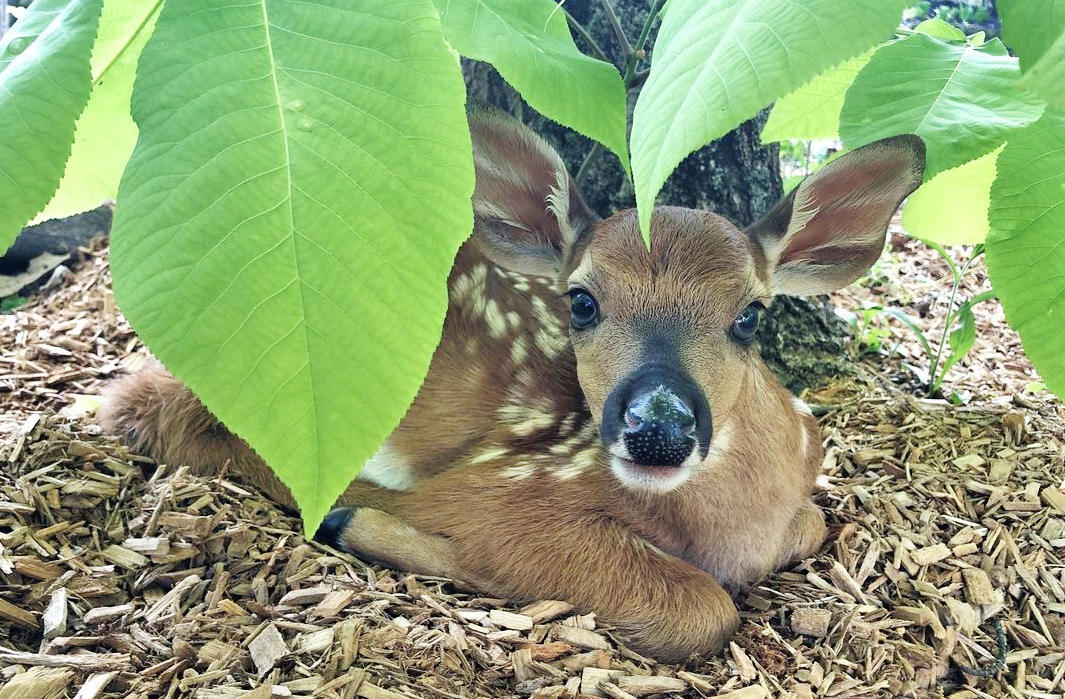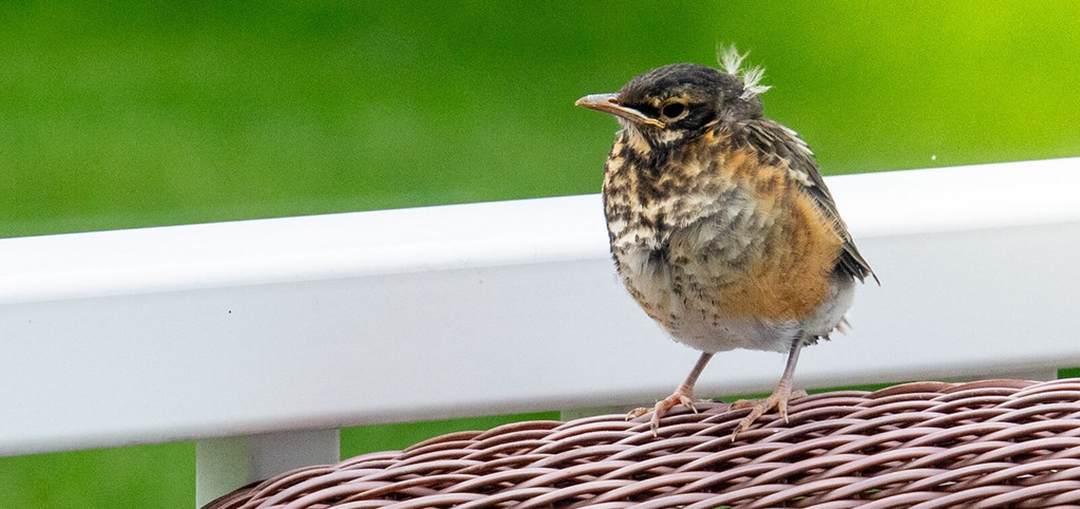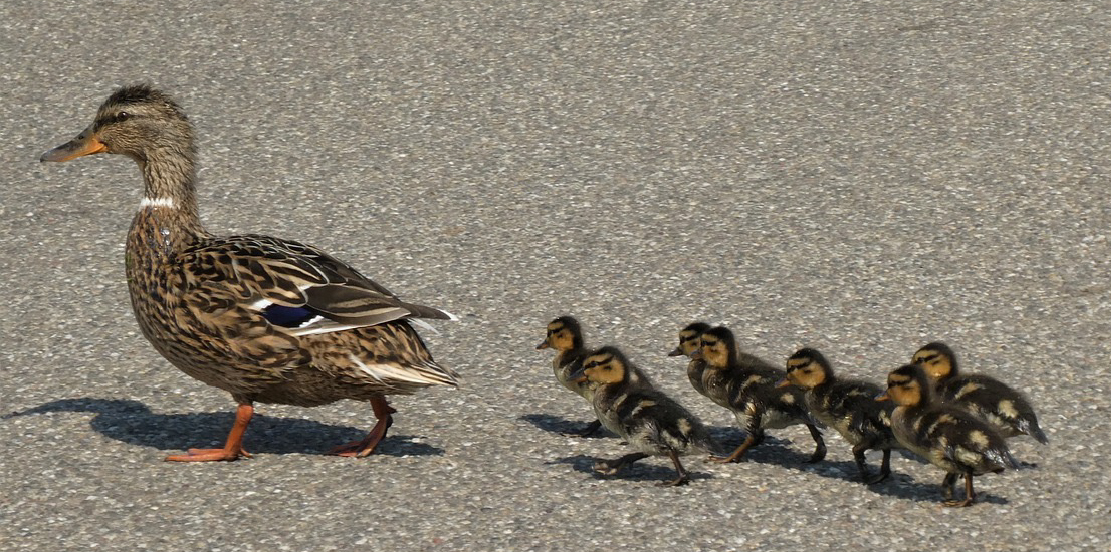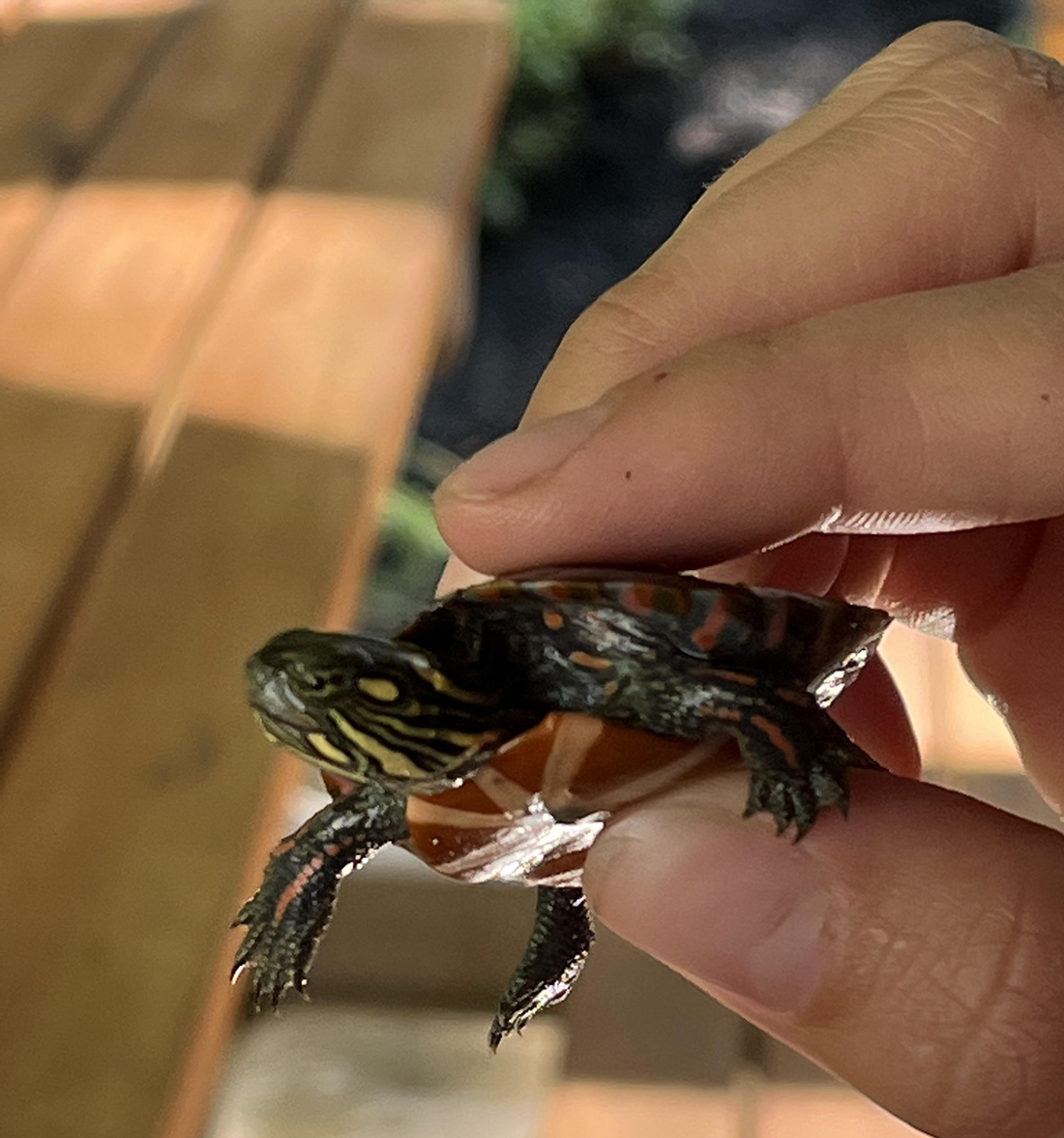STEPHANIE WEST
Blendon Woods Naturalist
Tiny bunnies hopping through your garden; a fawn hiding, alone in your shrubbery; Mama mallard parading her ducklings across your lawn, far from water; scruffy, tailless robins chirping loudly on your deck – what is wrong with all of these negligent parents, you might be thinking! Do the young ones need help? Are they orphans? What should you do?
Almost always, the answer is “nothing.” Wild animals rarely need our help in child rearing! While we consult our friends, mothers, aunts and the internet for advice, most animals are hard-wired to properly care for their young.

A white-tailed deer doe will leave her fawns alone all day while she forages for food. Far more obedient than human toddlers, the fawns will stay in their hiding spot until she returns, unless disturbed by a curious human or pet. If you are lucky enough to stumble across one, it is best to give it a wide berth and protect it from dogs; it should be gone by the next day!
That awkward baby bird, squawking for its parents, has probably just left its nest. When baby birds first fledge, they can flutter to the ground and hop pretty well, but take-off and landing take practice. Give ‘em a break! Learning to fly ain’t easy! In a few more days it will have gained strength and mastered the concept of “lift.” Before long, it will be following its parents through the treetops. In the meantime, the parents will feed it on the ground. All a baby bird needs from us is space and safety from dogs, kids and cats.

Likewise, baby rabbits seem impossibly tiny to be on their own – practically snack-sized for a predator! If you find a downy nest and the bunnies’ eyes are still closed, re-cover the nest and leave them be. Mom will come back when you are not around. (Even if you have touched the nest, she will still come back. Would you abandon your kids just because a stranger touched them?) But, if the babies are big enough to hop, they don’t need your assistance at all. It’s true that many of them will end up in the belly of a fox, hawk or owl, but that’s why they breed like, well, rabbits. Baby foxes, hawks and owls gotta eat too!

Hen mallards often choose to nest far from the pond, up to a mile away! They like dense cover and safety from predators, so your shrubbery might seem ideal to her, even if you live in a waterless neighborhood. Once you notice a few eggs in a nest, be patient; she will return to lay one per day for 10-15 days before she starts to sit on them. About one month later, all the babies will hatch at the same time so she can lead the whole family to water. She’ll need protection from your dog, privacy while she is incubating, and possibly a crossing guard if there are roadways between your yard and the nearest pond! If you see a mallard with babies, you can help her cross the street safely (they rarely use those “duck crossing” signs) and even follow the family to the water, from a distance, to make sure the ducklings are able to negotiate the curb. Mom sometimes underestimates how tiny her babies are!

Turtles also have a tendency to make bad decisions about nesting locations. They head off looking for just the right soil conditions to lay their eggs, and sometimes that leads them across roads. Not only do they neglect to look both ways, but “hurry” just isn’t in their vocabulary! If you see a turtle in the road, stop to help it across in the direction it was traveling. Use caution and common sense if the turtle is less than grateful for your assistance! Large snapping turtles can reach halfway around their shells to demonstrate their displeasure. Those baby turtles can take up to three months to hatch and are well equipped to find water and raise themselves. However, they don’t understand traffic patterns any better than the adults. Feel free to help them across the road – toward the pond – as well. Just be sure of your identification before you intervene! If you live near a wooded area they could be box turtles, which do not swim!
Close encounters with wildlife, especially baby animals, are always thrilling. Our instinct to help and protect is certainly admirable. But remember that wild critters know what is best for their young and rarely need our assistance. More often than not, human meddling hinders rather than helps. If you see an animal that you think needs help, call your local naturalist for advice before you get involved! If you truly know that a baby is orphaned (its mother is dead on the road, for example), the Ohio Wildlife Center is the only local organization that can legally raise or care for orphaned or injured native Ohio wildlife. Call them on 614-793-9453, or visit their website for instructions on how to proceed!

Very informative article. Lovely narrative. Enjoyed reading it to end. Thanks so much.
This article should make it’s way to every household